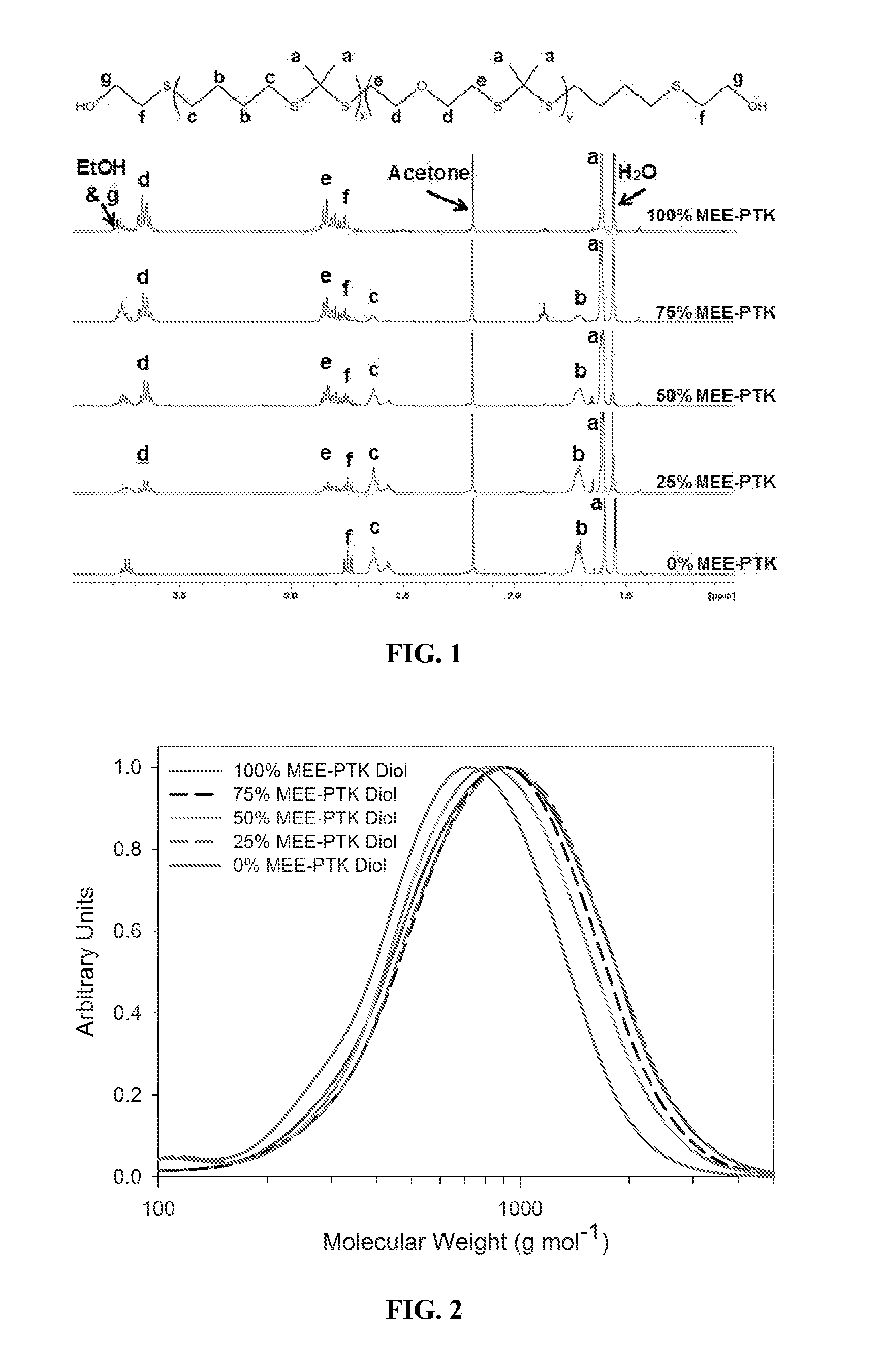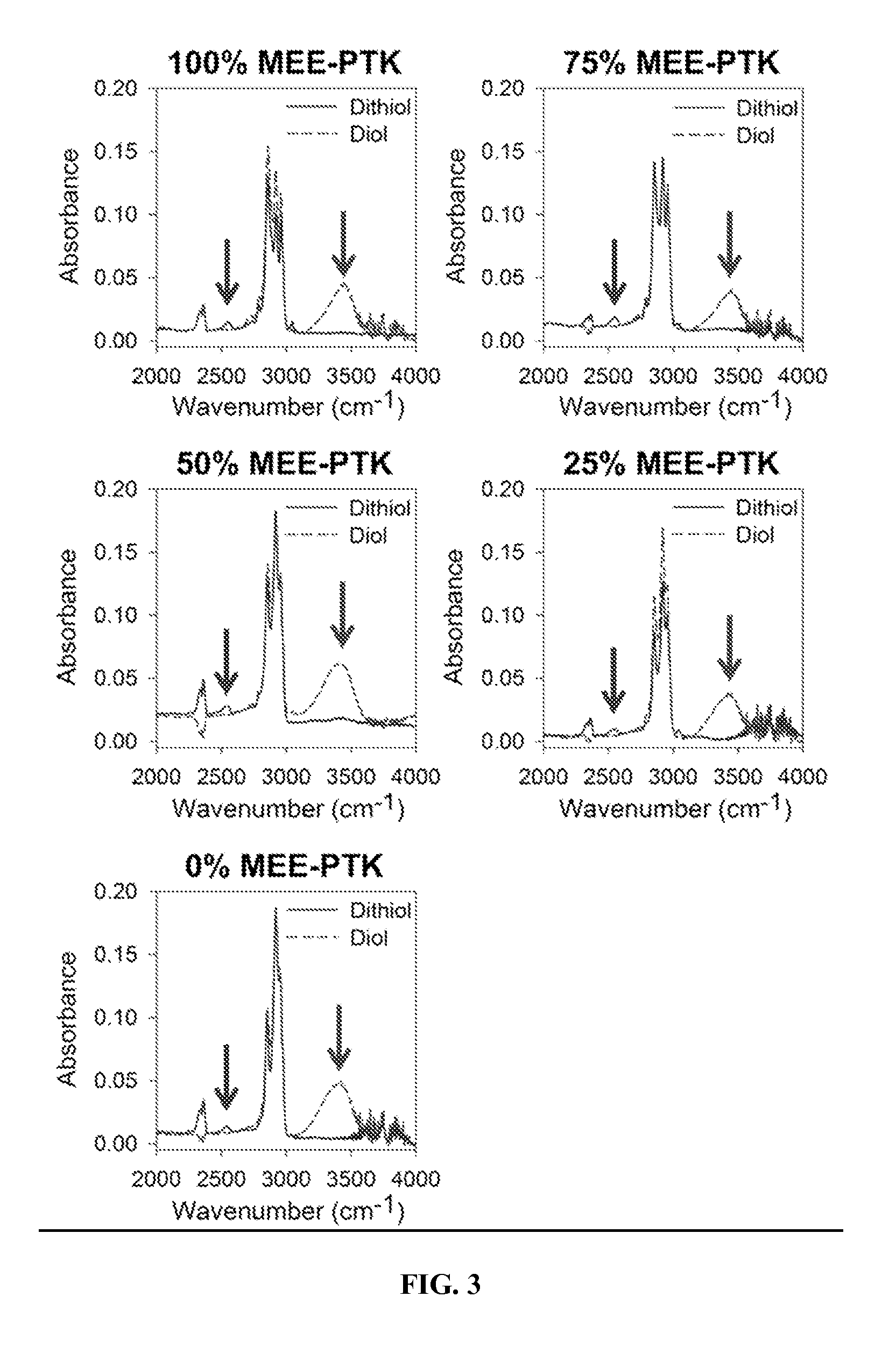Poly(thioketal-urethane) scaffolds and methods of use
- Summary
- Abstract
- Description
- Claims
- Application Information
AI Technical Summary
Benefits of technology
Problems solved by technology
Method used
Image
Examples
example 1
[0173]This Example describes the synthesis and characterization of embodiments of the present PTK-UR scaffolds. All data is reported as the mean and standard deviation. Statistical analysis was performed using single factor analysis of variance (ANOVA) and Tukey post-hoc comparison tests, with p-values less than 0.05 considered statistically significant.
[0174]PTK Polymer Synthesis and Characterization
[0175]All chemicals were purchased from Sigma-Aldrich (Milwaukee, Wis., USA) except the following. 2-mercaptoethyl ether (MEE), glutaraldehyde, and cobalt chloride were purchased from Fisher Scientific (Pittsburgh, Pa.), and the tertiary amine catalyst (TEGOAMIN33) was obtained from Goldschmidt (Hopewell, Va.). Glycolide and D,L-lactide were obtained from Polysciences (Warrington, Pa.). Coscat83, an organobismuth urethane catalyst, was supplied by ChasChem, Inc. (Rutherford, N.J.). Hexamethylene diisocyanate trimer (HDIt, Desmodur N3300A) was received from Bayer Material Science (Pittsb...
example 2
[0208]This Examples describes additional studied conducted on Sprague-Dawley rats using the scaffolds. described in Example 1. Unless stated otherwise, the materials and method described in Example 1 were implemented in this Example as well.
[0209]Briefly, pre-formed porous 100% and 0% MEE-PTK-UR scaffolds along with PEUR control scaffolds were implanted into ventral subcutaneous sites in male Sprague-Dawley rats for 7, 21, and 35 days. As shown in FIG. 11A, the 100% MEE-PTK-UR and PEUR scaffolds demonstrated tissue in-growth into the scaffold interiors by day 21, and both the 100% MEE-PTK-UR and PEUR scaffolds significantly degraded over the 35 day time frame. However, the PTK-UR scaffold formulations appeared to be more resilient materials in vivo as the PEUR scaffolds were significantly compressed from their initial thickness. None of the tested scaffolds led to an excessive immune response.
[0210]To test the ability of the scaffolds to treat tissue wounds in diabetic subjects, adu...
PUM
| Property | Measurement | Unit |
|---|---|---|
| Time | aaaaa | aaaaa |
| Time | aaaaa | aaaaa |
| Time | aaaaa | aaaaa |
Abstract
Description
Claims
Application Information
 Login to View More
Login to View More - R&D
- Intellectual Property
- Life Sciences
- Materials
- Tech Scout
- Unparalleled Data Quality
- Higher Quality Content
- 60% Fewer Hallucinations
Browse by: Latest US Patents, China's latest patents, Technical Efficacy Thesaurus, Application Domain, Technology Topic, Popular Technical Reports.
© 2025 PatSnap. All rights reserved.Legal|Privacy policy|Modern Slavery Act Transparency Statement|Sitemap|About US| Contact US: help@patsnap.com



